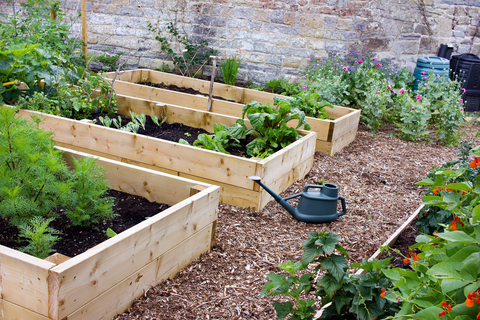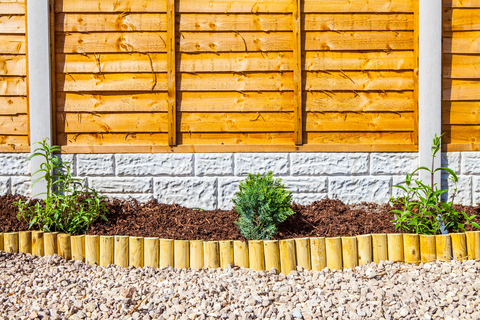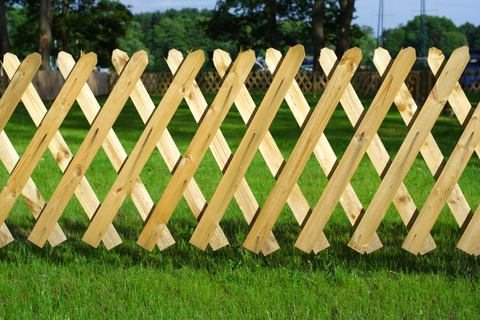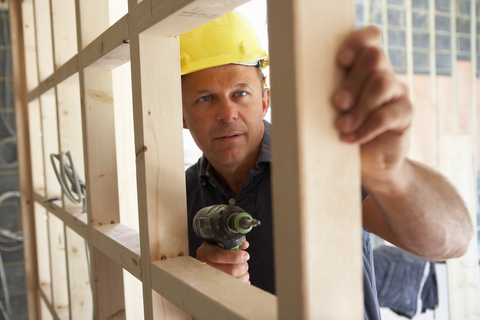The Advantage of Having Bespoke Wooden Gates
Published on 28 April 2023
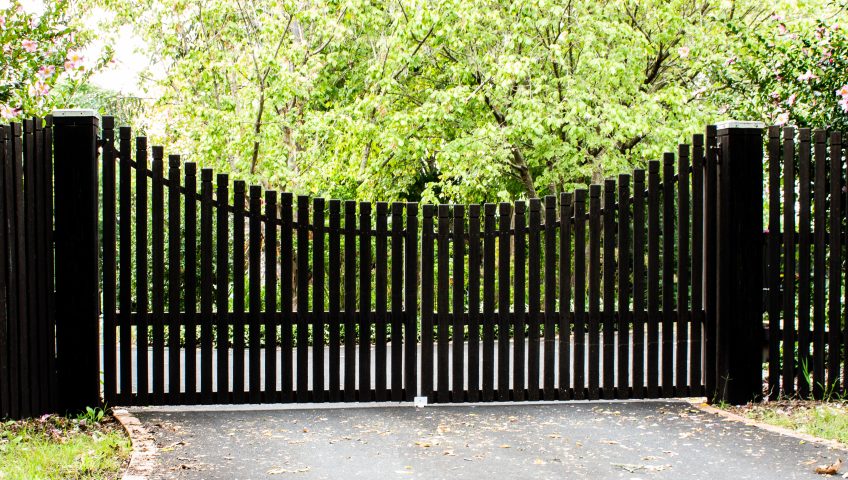
Choosing new driveway or garden gates isn’t just about filling a gap; it’s about creating a secure, durable, and stylish entrance that works with your property. Off-the-shelf gates often struggle with sloping drives, awkward openings, or design mismatches. Bespoke wooden gates, built to measure and crafted with traditional mortise and tenon joints, solve those challenges while enhancing your home’s kerb appeal.
At Linnell Brothers, we’ve been supplying quality timber products for over 145 years. With our own on-site treatment plant, vast stockholding and expert joinery, we help homeowners, trades and specifiers achieve a better fit, finish and lifespan from their gates.
What You’ll Learn
- How bespoke gates solve fit, privacy and design challenges that standard options can’t
- Which timber and treatment Use Class to choose (UC3 vs UC4) for maximum durability
- Hardware specifications that genuinely improve security (and what’s unnecessary)
- Realistic costs and lead-times, plus what factors change the price
- A comprehensive specification checklist for your quote request
1. Why Go Bespoke vs Standard?
Standard, mass-produced gates are limited in size and style. Bespoke gates are designed around your exact site conditions:
- Perfect fit: Built to your measurements, they follow slopes or awkward layouts with raked bottom rails, avoiding gaps or uneven swings.
- Strength & stability: Correct bracing and mortise & tenon joints reduce rattle, sag, and warping.
- Design freedom: Add trellis tops, lattice work, integrated planters, or lighting. Even pet-proof spacing can be specified.
- Finish control: Choose your frame section, board profile, and top line (arched, flat, or swept).
Competitors often stop at “better fit”; Linnell Brothers go further by helping you specify the right construction for longevity.
2. Privacy & Security by Design
Your gate can do more than just look good – it can actively improve privacy and security:
- Privacy: Control board spacing to block sight lines from the street or neighbouring properties.
- Security: Choose climb-resistant top profiles, lockable drop bolts, heavy-duty hinges, and through-bolted ironmongery.
- Height: In the UK, planning rules typically allow up to 1 m next to a highway or 2 m elsewhere without permission (always check your local authority or the planning commission)
3. Durability, Treatment & Timber Choice
A gate is only as durable as its timber and treatment:
- Redwood choice: Swedish/Russian redwood offers excellent stability in UK conditions compared with cheaper softwoods.
Treatment classes:
- UC3 – Suitable for gate frames and boards that remain above ground. UC3 wood is used outdoors, above ground and exposed to the weather, making it ideal for most gate components.
- UC4 – Essential for posts and any components with ground contact. UC4 wood is used outdoors, in permanent contact with the ground, providing enhanced protection against moisture and decay.
- On-site treatment: Our in-house plant pressure treats timber consistently, saving weeks of lead time.
Even treated timber benefits from regular care:
- Initial re-treatment after 12-18 months
- Annual inspection of hardware and joints
- Re-finishing every 3-5 years depending on exposure
- Immediate treatment of any cut surfaces during installation
Aftercare: Apply a microporous exterior oil every 2–3 years to maintain protection and colour. See Wood Protection Association guidance.
4. Aesthetics & Kerb Appeal
Your gate is the first thing visitors see; hence, you ought to be careful about these things:
Architectural Harmony
- Traditional Properties: Classic five-bar designs with mortise and tenon joints complement cottage and period architecture. Consider curved or shaped top rails for added character.
- Contemporary Homes: Clean lines with horizontal board arrangements or mixed materials (wood with steel frames) suit modern aesthetics.
- Mixed Styles: Shaker-style boards or contemporary slatting can bridge traditional and modern architectural elements.
Finishing Options
- Natural Finishes: Clear oils and stains highlight timber grain whilst providing weather protection. Microporous formulations allow moisture vapour movement, reducing splitting and cracking.
- Painted Finishes: Traditional estate colours or contemporary hues can match existing property features. Ensure paint systems are compatible with pressure-treated timber.
5. Hybrid & Sustainable Options
Modern Construction Techniques
- Wood-Steel Hybrids: Timber cladding over steel frames provides a traditional appearance with enhanced strength for wider spans. Concealed steel posts eliminate visible fixings whilst improving security.
- Composite Integration: Low-maintenance composite boards within traditional timber frames reduce long-term upkeep whilst maintaining natural aesthetics.
Environmental Considerations
- Responsibly sourced timber supports sustainable forestry practices.
- Low-VOC Finishes: (Volatile Organic Compound) finishes are eco-friendly treatments that release far fewer harmful chemicals into the air, helping to improve indoor air quality and support sustainability. By choosing these products over traditional finishes, you reduce potential health risks such as respiratory issues, create a safer living environment, and contribute to lowering wider environmental impacts like air and water pollution. Environmentally friendly treatments reduce harmful emissions.
- Local Processing: On-site treatment facilities reduce transport emissions and ensure consistent quality control.
6. Costs, Lead-Times & Delivery
The cost of bespoke wooden gates depends on:
- Timber grade and density
- Gate span, height, and frame section
- Joinery complexity and design detail
- Ironmongery quality and security upgrades
- Treatment and finishing choices
Delivery expectations:
- Stock components with treatment: typically 3 days.
- Made-to-measure gates: allow additional time for design sign-off, fabrication, and curing. Always confirm current lead times with our team.
What to Expect
Professional suppliers provide detailed quotations covering all aspects from initial consultation through to delivery. Expect site visits for complex installations and comprehensive aftercare guidance for ongoing maintenance.
Common Scenarios & Solutions
Sloped Driveway Gates
- Challenge: Standard gates leave gaps or scrape the ground.
- Solution: Bi-parting gates with raked bottom rails, enhanced hinge systems rated for uneven stress, and proper ground clearance calculations.
Exposed, Windy Locations
- Challenge: Gates suffer wind damage or become difficult to operate.
- Solution: Shorter panel sections to reduce wind loading, strategic ventilation gaps, robust frame construction, and potentially hybrid steel-timber construction for strength.
Heritage Property Requirements
- Challenge: Planning restrictions and architectural sensitivity.
- Solution: Traditional mortise and tenon joinery techniques, period-appropriate ironmongery, and historically accurate proportions and detailing.
Family Safety Considerations
- Challenge: Securing gates against children or pets whilst maintaining adult accessibility.
- Solution: Reduced board spacing, self-closing hinges, child-resistant latches, and appropriate height specifications.
How Linnell Bros Help
Our process ensures every gate is built to last:
- Consultation – expert advice on styles, treatments, and regulations.
- Site measurement – to ensure a perfect fit.
- Fabrication – traditional mortise & tenon joinery for strength.
- On-site treatment – pressure-treated to UC3 or UC4 standards.
- Quality checks – every gate is inspected before dispatch.
- Delivery – stocked elements in as little as 3 days.
- Aftercare pack – maintenance guidance for long service life.
With 145+ years’ heritage, a 17,000 m³ stockholding, and our own treatment plant, Linnell Brothers is a trusted partner for homeowners, builders, and landscapers.
Transform Your Entrance with Linnell Bros
Discover the difference a bespoke wooden gate can make. Explore our wide range of beautifully crafted gates, built to fit your home perfectly. Use our online calculators for accurate measurements, then let us create a made-to-measure solution tailored to you.
Ready to Get Started?
- Browse our complete wooden gate collection to see styles and options that match your vision
- Use our online calculators for accurate measurements—take the guesswork out of your specification
- Speak to our timber specialists on 01327 354422 for expert guidance tailored to your project
- Contact us online for a detailed quote using your completed specification checklist
Over 145 years of craftsmanship, 17,000m³ of premium timber stock, and in-house treatment facilities—discover why discerning homeowners choose Linnell Brothers for gates that stand the test of time.
Frequently Asked Questions
- Do I need planning permission for driveway gates?
- Usually not if height requirements are met—typically 1m adjacent to highways, 2m elsewhere. Always check local rules, especially for conservation areas and listed properties.
2. UC3 vs UC4—what’s the difference?
- UC3 is for wood used outdoors, NOT in contact with the ground. UC4 is for wood in contact with or very close to the ground and frequently wet. Choose UC4 for posts and any ground-contact components.
3. How long will treated redwood gates last?
- Lifespan depends on exposure and maintenance. Quality treatment slows decay significantly, and regular refinishing can extend service life to decades with proper care.
4. What hardware improves security the most?
- Heavy-duty hook and band hinges with through-bolting, quality mortise locks, and lockable drop bolts for bi-parting gates. Specify galvanised or stainless steel fixings for longevity.
5. What’s the typical lead-time?
- Stock elements with standard treatment often ship within days. Bespoke fabrication requires additional time for measurement, design approval, and finishing, contact us for current lead-times on made-to-measure projects.
6. What’s the best finish for longevity?
- Microporous exterior wood oils or professional coating systems designed for pressure-treated timber. Avoid thick film coatings that crack early and trap moisture.



